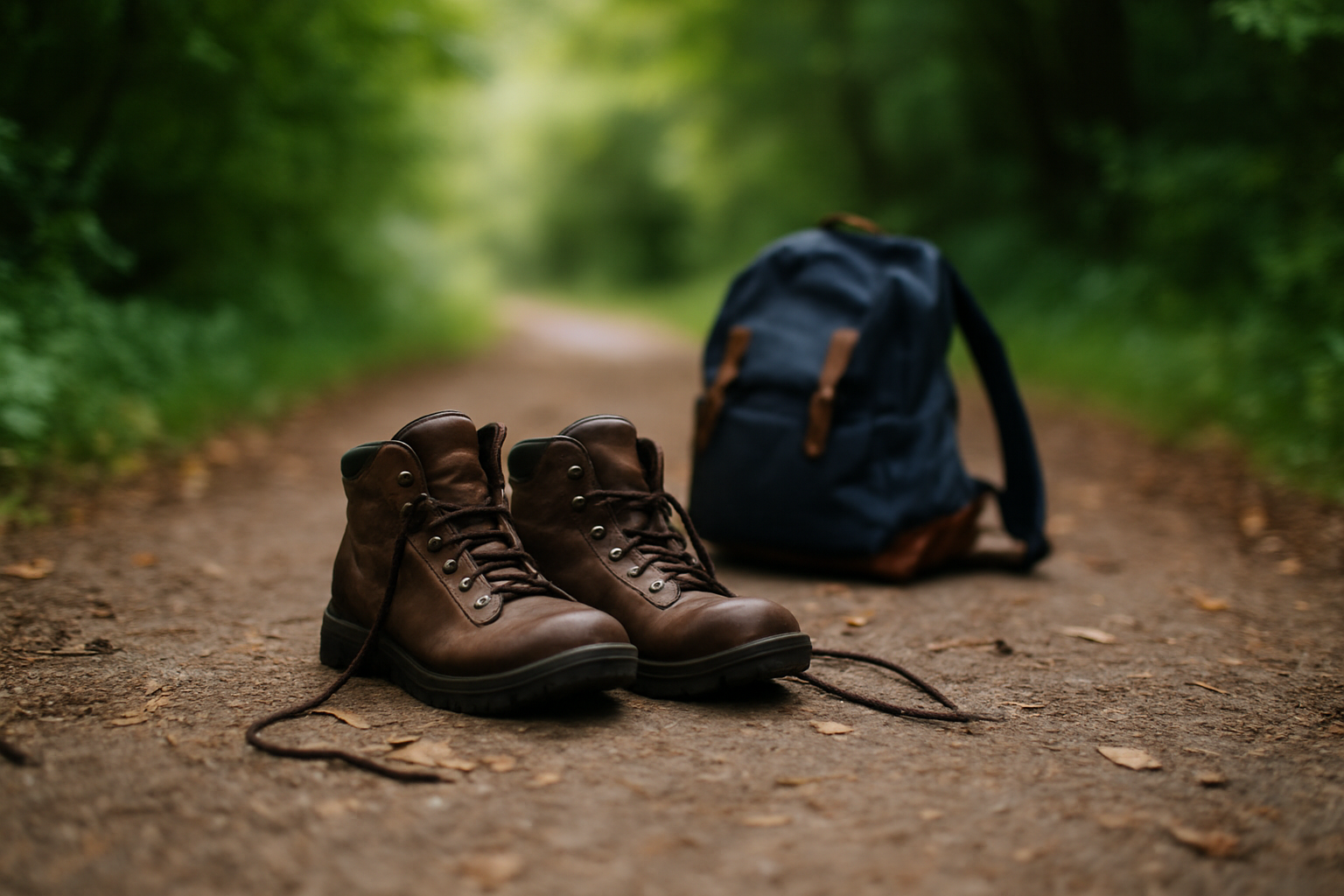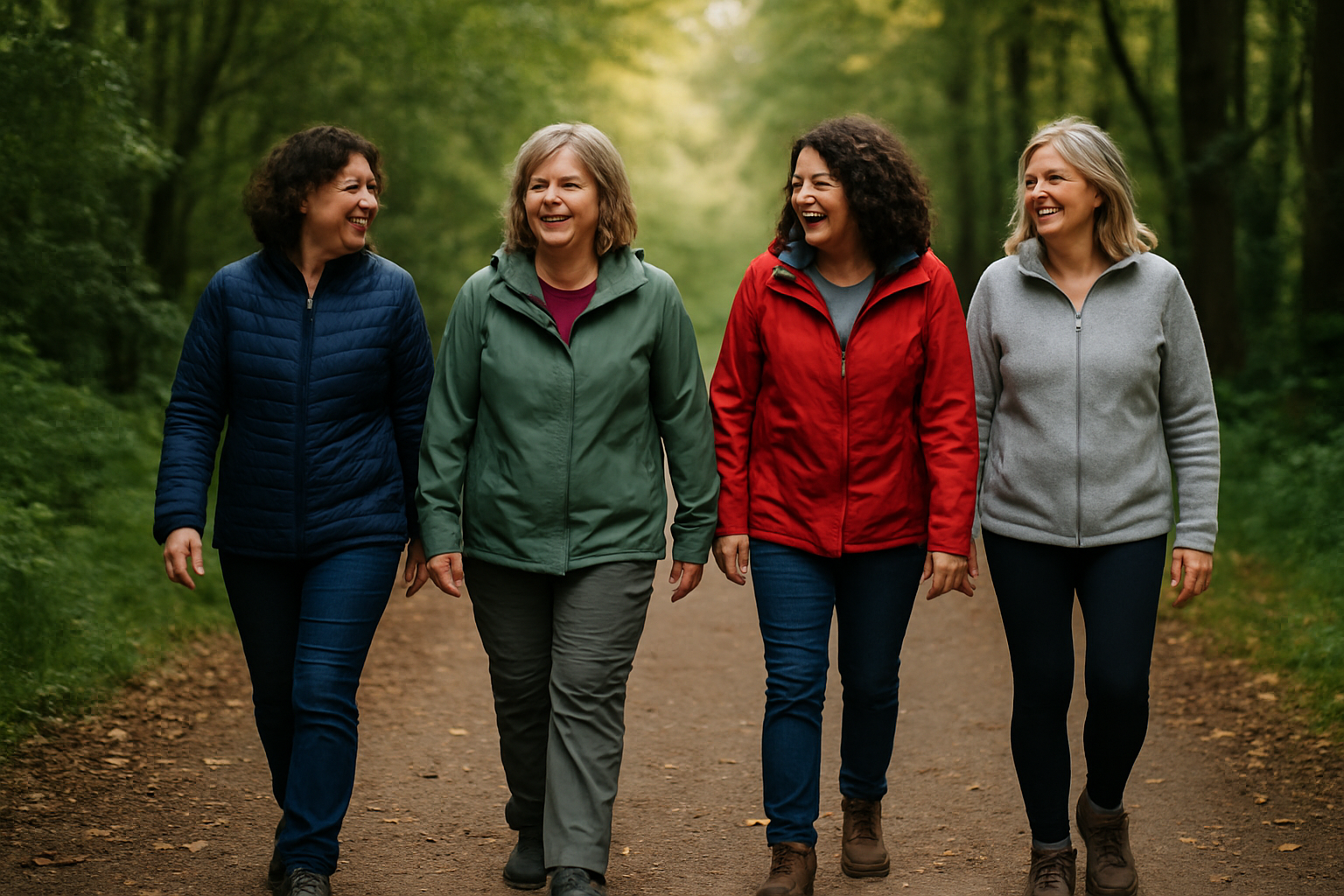Getting Back into Walking After a Break
Life has a way of knocking us off the paths we love most. Sometimes it’s sudden, like an illness, an injury, or grief that takes the ground out from under us. Other times it’s slower things like family responsibilities, work, or the quiet slide of mental health struggles that leave us drained and disconnected. If walking has always been your anchor, your reset button, or even just your way to breathe, it can be deeply unsettling when you stop. Days turn into weeks, weeks into months, and before you know it, the idea of lacing up your boots again feels overwhelming..
But, you’re not starting from scratch! You carry every step you’ve ever taken inside you. The joy of the trail, the calm of fresh air, the strength in your legs. It’s all still there, waiting. Getting back into walking after time away is not about punishment or catching up; it’s about reconnection.
Why We Stop Walking
Let’s be honest, life happens. Walking might be simple in theory “just put one foot in front of the other” but in reality, there are countless reasons we stop.
Illness or injury: Sometimes our bodies force us to pause. Healing takes time, and frustration often sneaks in when we can’t move the way we want.
Grief and loss: When we lose someone or something dear, the energy to do even the smallest things disappears. The thought of walking can feel meaningless in the shadow of grief.
Mental health struggles: Anxiety, depression, burnout can all steal motivation. The very activity that could help feels impossible to start.
Family responsibilities: Caring for children, partners, or parents often pushes our own needs aside. Walking slips off the list, replaced by “more urgent” things.
Work and busyness: Long hours, stress, and the pressure to do it all can leave us too exhausted to get out the door.
Weather and seasons: In Scotland especially, dark winters and rain can dampen even the keenest walker’s enthusiasm.
Whatever your reason, you’re not alone. Every walker in our group has paused at some point. The break doesn’t erase your identity as a walker. It just makes your comeback story richer.
The Guilt Trap
Many women tell me the hardest part of getting back into walking isn’t the fitness, it’s the guilt.
“I should never have stopped.”
“I’ve lost all my progress.”
“Everyone else is fitter than me now.”
That inner critic can be brutal. But here’s something to remember: guilt is wasted energy. It doesn’t get you out the door. It doesn’t make your legs stronger. It just keeps you stuck. Walking is never about perfection. It’s about presence. And presence starts the moment you step outside again, no matter how long it’s been.
The First Step: Permission
Before routes, boots, or distances the first step back into walking is giving yourself permission.
Permission to be slower.
Permission to be unfit.
Permission to grieve, to struggle, to not be the walker you once were.
You don’t owe anyone a performance. You only owe yourself the chance to reconnect.
Tiny Steps Back
When you feel ready to return, resist the urge to dive into a 10-mile hill walk. That’s a shortcut to injury and overwhelm. Instead, think tiny.
A walk to the end of the street and back.
A ten-minute stroll after dinner.
Sitting on a park bench with a flask of tea.
These count. They matter. They’re the bridge between “not walking” and “walking again.” Sometimes one tiny step is enough to restart momentum.
Building Confidence
After a break, confidence often takes a knock. You might worry about keeping up, getting lost, or holding others back. Here are a few ways to rebuild:
Go solo first. A short walk on your own can remind you of your independence and pace.
Choose familiar routes. Revisiting a path you know well removes the stress of navigation.
Walk with one trusted friend. Low pressure, lots of support.
Start with gentle group walks. Most groups (including ours) have lots of members who prefer slower-paced, shorter routes.
Remember: confidence doesn’t come before the walk. It comes after.
Reconnecting With Your Body
If illness or injury kept you off your feet, you may feel uncertain about what your body can handle now. The key is kindness.
Listen: Notice how your body feels, not how you think it should feel.
Rest: Breaks aren’t failure; they’re part of rebuilding.
Stretch: Gentle movement before and after can ease stiffness.
Fuel: Nourish yourself with water and good food.
Mental Health and Walking
Walking is often prescribed as medicine for the mind but starting again when you’re low is tough. If anxiety whispers, “What if people stare?” remember: most people are too busy with their own lives. If depression says, “What’s the point?” counter with, “I’ll just do five minutes.” Nature has a way of shifting us gently. The rhythm of steps, the sound of birds, the feel of wind can remind us we’re alive. Walking doesn’t fix everything, but it creates space for healing to begin.
Grief and the Trail
Walking after loss carries its own weight. Sometimes, the silence of a trail can feel unbearable. Other times, it’s the only place where grief feels safe to breathe. Many find comfort in dedicating a walk to the person they’ve lost. Carrying a memory with you, like a photo, a song, a story shared along the way can turn the path into a quiet form of remembrance. Grief is love with nowhere to go. Walking gives it somewhere.
Family and Responsibilities
For those juggling children, parents, or partners, carving out walking time can feel selfish. But it isn’t. When you walk, you recharge. When you recharge, you have more to give. Even ten minutes away can shift your energy for the rest of the day. Sometimes, the best thing you can do for your family is put your boots on.
Practical Tips for Easing Back
Set realistic goals. Instead of “I’ll walk every day,” try “I’ll walk twice this week.”
Track progress. A simple journal or app can remind you of how far you’ve come.
Plan for weather. Keep waterproofs and layers handy, excuses shrink when you’re prepared.
Make it social. A walking buddy makes commitment easier and more enjoyable.
Mix it up. Switch between short strolls, woodland walks, or gentle hills to keep motivation fresh.
The Comparison Trap
Scrolling online, it’s easy to feel like everyone else is summiting Munros while you’re puffing on a local loop round the park. But remember: no one posts their struggles, their sofa days, their tears at the trailhead. Your walk doesn’t have to look like anyone else’s. The most important view is the one in front of you.
The Power of Community
One of the greatest motivators in getting back to walking is not doing it alone. Walking groups provide more than just company. They provide accountability, encouragement, and laughter when you most need it.
Our group exists for exactly this reason. Whether you’re at your fittest or just starting again, you’ll find women ready to walk alongside you. No judgment. Just steps, together.
A Gentle Plan to Restart
Here’s a simple four-week guide for easing back in:
Week 1: 2–3 walks, 10–20 minutes each.
Week 2: 2–3 walks, 20–30 minutes each.
Week 3: 2–3 walks, 30–45 minutes each.
Week 4: 3 walks, mix of 30–60 minutes.
Adjust as needed. The aim isn’t speed; it’s consistency. Every walk you’ve ever done is still part of you. Your legs remember. Your lungs remember. Even if you’ve lost fitness, you haven’t lost you. The first steps back may feel clumsy, but soon the rhythm returns. And when it does, you’ll wonder why you ever doubted yourself.
Getting back into walking after time away is not about erasing the past, it’s about embracing the present. Life will always throw challenges, but the path remains. Every step forward is a victory.
So if you’ve been waiting for a sign, let this be it. Lace up. Step out. Feel the ground beneath your feet.
The trail is waiting. And so is a stronger, calmer, braver you.


